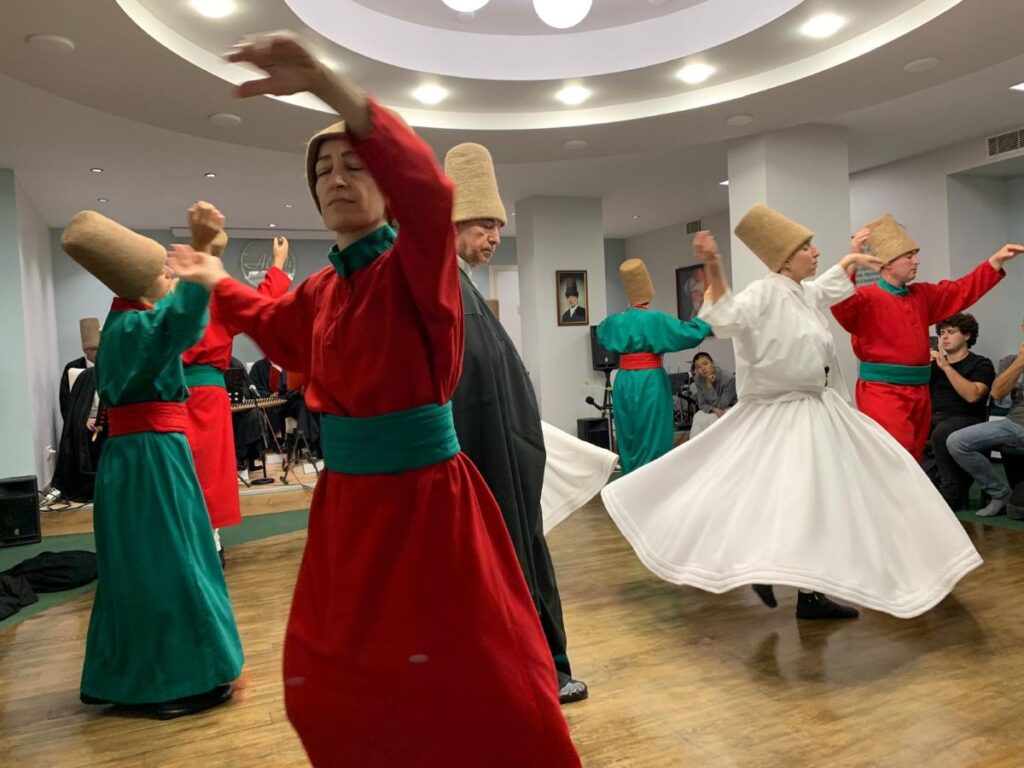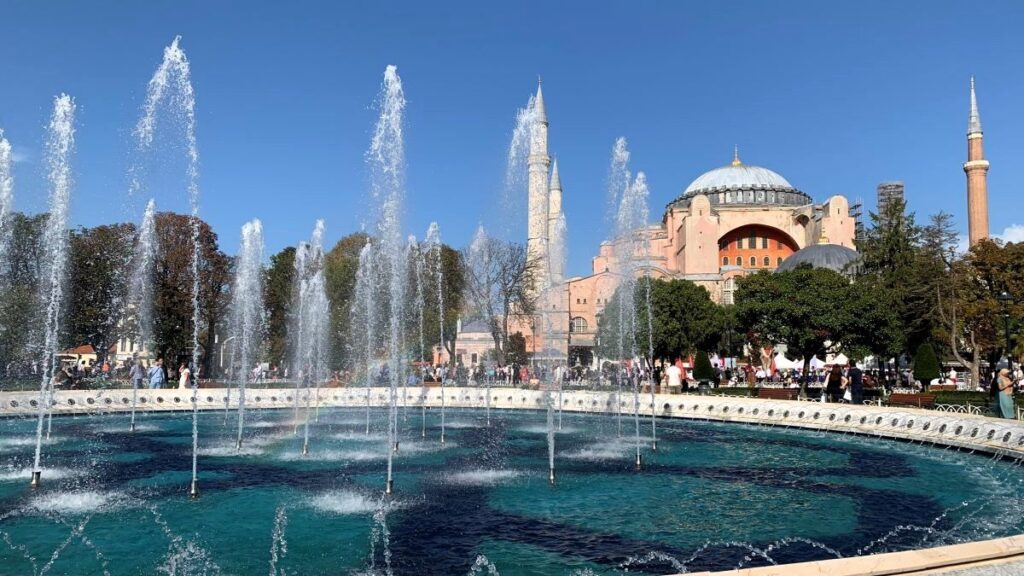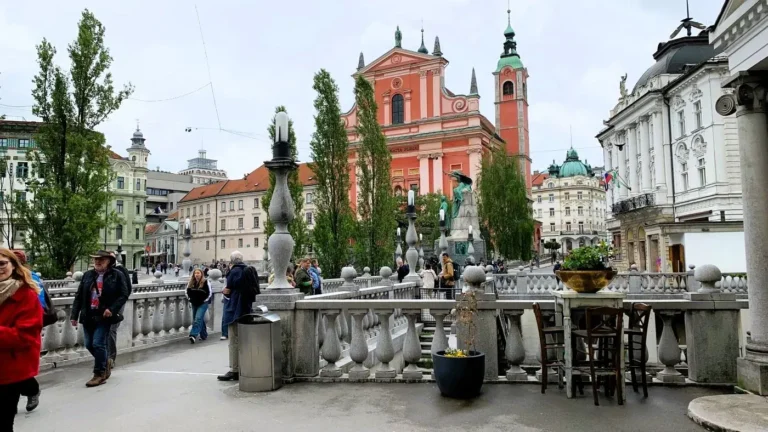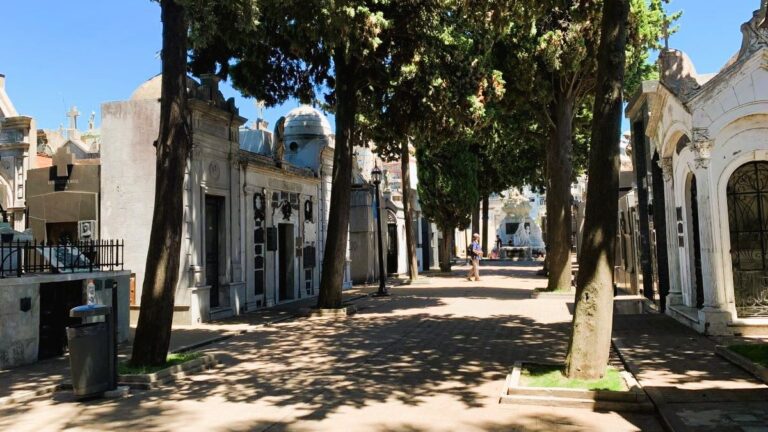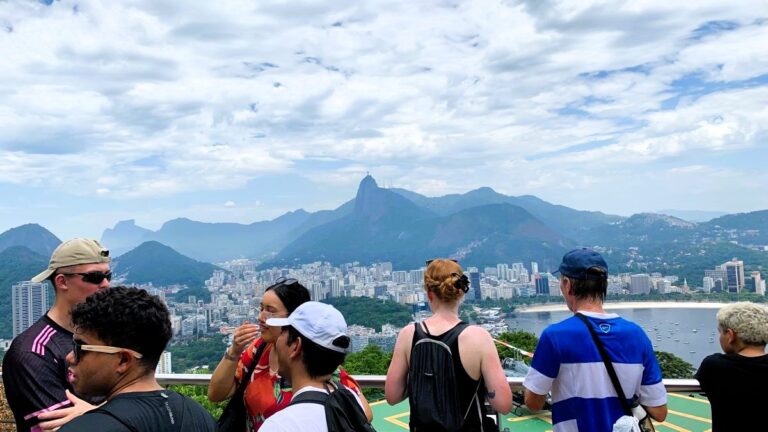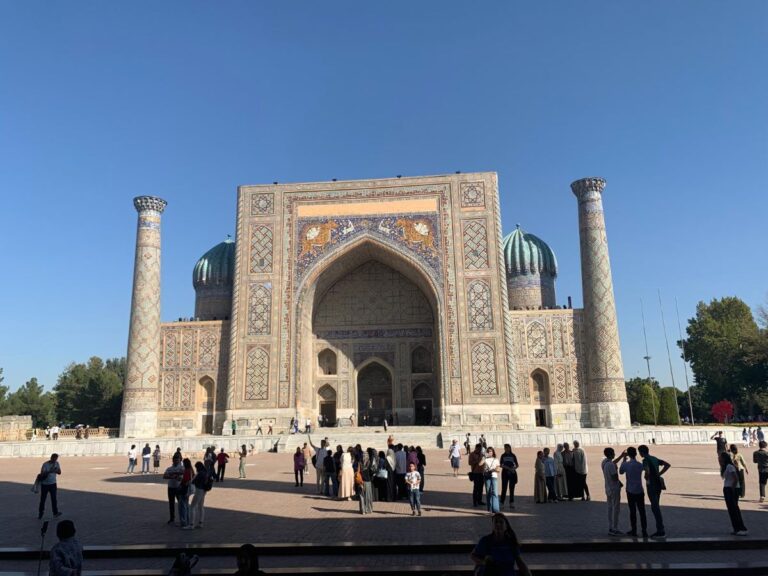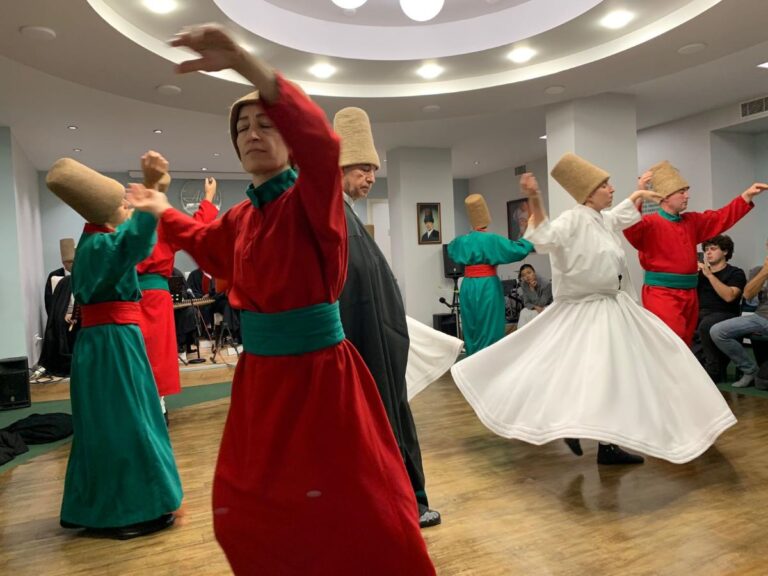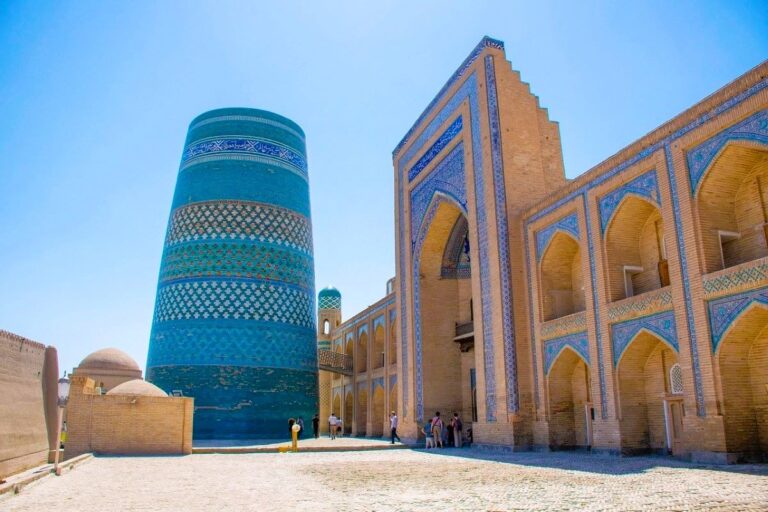Your Ultimate Turkey Travel Guide (2025): Everything First-Time Visitors Need to Know
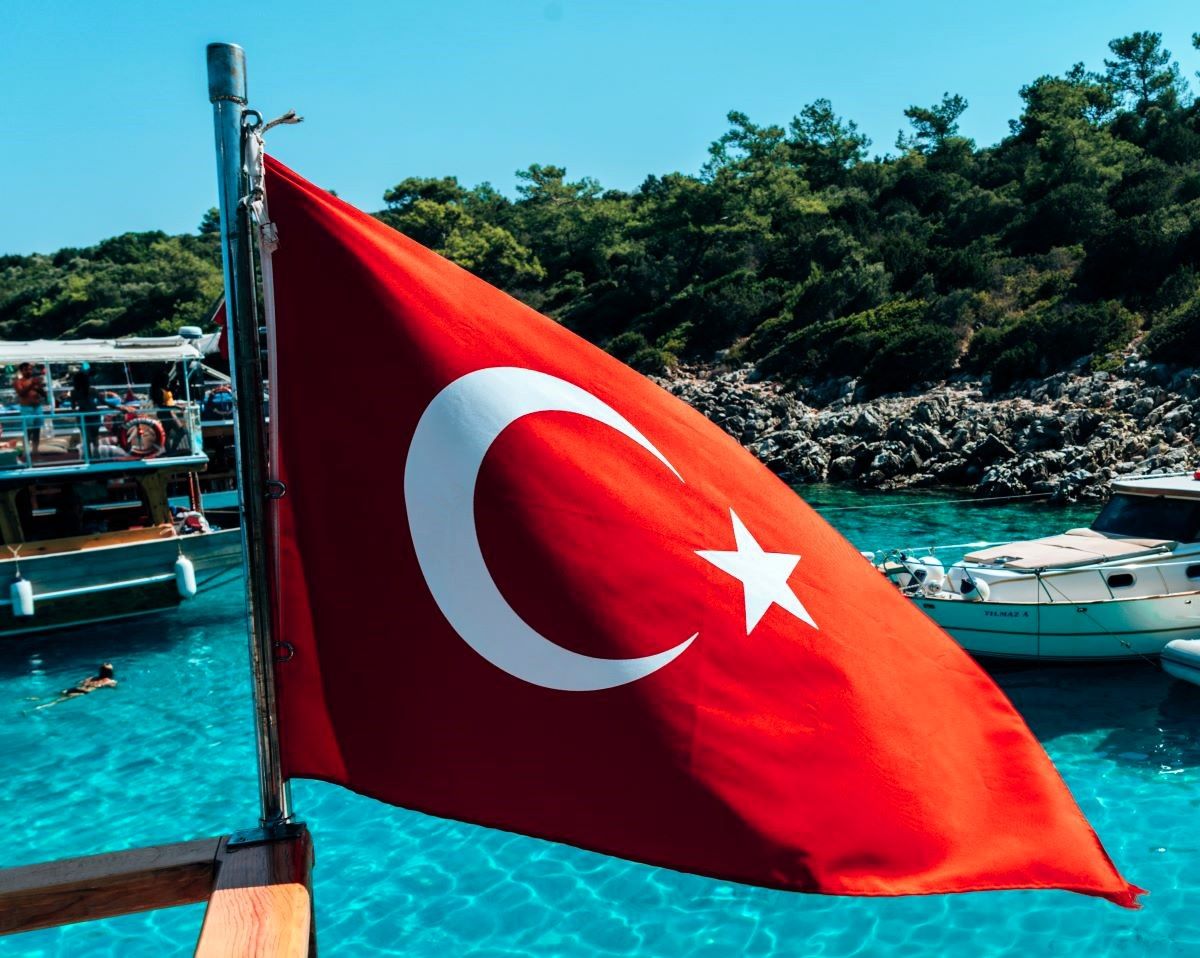
Planning your first trip to Turkey (now called Turkiye)? You’re in for an unforgettable experience.
One of the most fascinating things about Türkiye is its geography. The country stretches across both Europe and Asia, with the city of Istanbul famously straddling both continents.
It’s the only city in the world where you can literally stand in Europe and gaze across the water into Asia.
But this east-meets-west fusion isn’t just physical—it’s cultural too. Türkiye has been a crossroads of civilizations for thousands of years, and that rich blend is still visible today.
You’ll find Ottoman mosques next to Roman aqueducts, ancient bazaars beside hip cafés, and neighborhoods where the call to prayer mingles with the clinking of tea glasses.
It’s this seamless mix of cultures that gives Türkiye its unforgettable charm.
The country offers everything from sun-soaked coastlines to mesmerizing historical landmarks like the Hagia Sophia and Ephesus.
This Turkey Travel Guide will help you easily and confidently navigate and explore this fascinating destination.
For help in planning an overseas trip visit: A Step-by-Step Guide on How to Plan an Overseas Trip: 10 Essential Trip Planning Tips
Use the Table of Contents below to jump to any section.
A Brief History of Turkey
Turkey’s story is one of incredible transformation and influence, shaped by ancient empires, significant leaders, and strategic geography.
Located at the crossroads of Europe and Asia, this nation has been a melting pot of cultures for thousands of years. To truly appreciate Turkey today, it helps to understand a bit about its rich and varied history.
Ancient Beginnings and Early Empires
The evidence of human habitation in what is now Turkey dates back approximately 50,000 years. Ancient Anatolia, the Asian part of modern Turkey, was the cradle of some of history’s earliest civilizations.
Around 4,000 BCE, the Hittites founded a prominent empire here, followed by the rise of other influential cultures such as the Phrygians and Lydians.
One of the most iconic cities of the ancient world, Troy, was located in Turkey. Famously chronicled in Greek mythology, the ruins of Troy now serve as a significant archaeological site, offering striking insights into the region’s deep past.
Are you a history buff? If you are visiting Turkey, exploring these remnants provides an unforgettable experience.
For more about Ancient Anatolia’s civilizations, check out this detailed history of Turkey.
The Byzantine and Ottoman Empires
Fast-forward to the Roman Empire, Turkey became one of its core regions, specifically as the Eastern Roman—or Byzantine—Empire.
Constantinople, now Istanbul, was a centerpiece of Byzantine power and culture. Even today, visitors can see the echoes of this era in the city’s landmarks such as Hagia Sophia, originally built as a cathedral in 537 AD.
By the late 13th century, the rise of the Ottoman Empire reshaped Turkish history. Founded by Osman I, it expanded its reach across Europe, Africa, and Asia, becoming one of the most formidable empires of all time.
The Ottomans left a lasting impact on Turkish art, architecture, and governance. Topkapi Palace, once home to Ottoman sultans, is now a must-visit museum showcasing this fascinating period.
More information about the Ottoman Empire’s history can be found on this Turkish history overview.
Becoming Modern Turkey
The fall of the Ottoman Empire after World War I led to Turkey’s rebirth. Following the Treaty of Lausanne in 1923, Mustafa Kemal Atatürk declared the Republic of Turkey. Known as the “Father of the Turks,” Atatürk spearheaded sweeping reforms aimed at modernizing the nation. These included adopting a new legal framework, promoting secularism, and even changing the Turkish alphabet.
Under Atatürk’s leadership, Turkey transformed into a modern republic with its capital in Ankara, while Istanbul remained a vibrant cultural hub.
If you’re curious about this transformation, you can explore a timeline of key events in Turkey’s history.
A Crossroads of Past and Present
Turkey’s role as a bridge between East and West has continued to make it globally significant. From its ancient ruins to its contemporary politics, Turkey’s history keeps shaping its future.
For travelers, understanding this history adds depth to every monument visited and every local story heard.
Ready to explore the past? Turkey’s historic sites are waiting.
Understanding Turkish Culture
Turkey’s rich culture is deeply intertwined with its history and geography. It offers a mix of Eastern and Western influences, creating a unique character that draws visitors from all over the world.
Traditional Turkish Festivals
Turkey is renowned for its festivals that reflect its vibrant heritage and values. These events are shaped by a blend of religious traditions, history, and the natural cycle of the year.
- Nevruz: Celebrated around March 21, Nevruz marks the arrival of spring and is recognized as the Persian New Year across many cultures. In Turkey, it’s a joyous occasion with feasting, music, and dancing. Many see it as a time of renewal and hope, with families gathering to celebrate nature’s rebirth. Learn more about Nevruz and Turkey’s spring festivals here.
- Ramadan (Ramazan): As a predominantly Muslim nation, Turkey observes Ramadan with dedication. This month of fasting and spiritual reflection concludes with Eid al-Fitr (Şeker Bayramı), a holiday filled with sweet treats, family reunions, and acts of charity. For visitors, it’s a great time to experience Turkey’s hospitable culture firsthand.
Discover more Turkish festivals here.
These festivals offer a glimpse into Turkey’s heart and soul.
Art and Craft in Turkey
Turkish art and craftsmanship are steeped in traditional methods while showcasing intricate designs that span centuries. These timeless crafts not only provide stunning souvenirs but also serve as a window into Turkey’s artistic legacy.
- Carpet-Weaving: Turkish carpets are iconic, known for their vibrant colors, geometric patterns, and craftsmanship. Each region in Turkey has its own style, with some weavers using techniques and traditions passed down for generations. These carpets often tell stories and reflect the maker’s surroundings.
- Ceramics and Tiles: Turkey’s ceramic arts, especially from İznik, are world-famous. The distinctive blue-and-white İznik tiles, often seen in mosques and palaces, are a hallmark of Ottoman-era design.
- Calligraphy: Ottoman calligraphy is an enduring art form in Turkey, blending aesthetics and meaning. You can find examples of this artistry in historical mosques, ancient manuscripts, and even modern souvenirs.
Want to explore Turkey’s artistic heritage? Check out more about Turkish crafts here.
Music and Dance: Traditional Music and The Whirling Dervishes


Music and dance in Turkey offer a tapestry of sounds and styles, inspired by the diverse cultures that have lived in the region over centuries. These living traditions captivate audiences worldwide.
- Traditional Music: Turkish folk music varies significantly across the country. Instruments such as the bağlama (Turkish stringed instrument) set the tone for heartfelt tunes, often reflecting themes like love and nature. Ottoman-era classical music also remains popular, showcasing elegant compositions for the ney (reed flute).
- Whirling Dervishes: One of Turkey’s most recognized cultural performances, the Whirling Dervishes are part of the Sufi tradition. Their spinning dance is both a spiritual and artistic display, symbolizing a connection to the divine. To learn more about the Whirling Dervishes, check out my post: Whirling Dervishes in Istanbul: A Spiritual Journey You Can’t Miss
- Regional Dances: From the energetic Horon of the Black Sea to the traditional Halay of Central Anatolia, Turkey’s folk dances are a colorful representation of its cultural diversity.
Want to immerse yourself in Turkey’s music and dance culture? Explore more about the country’s traditions here.
Each of these cultural elements tells a story about Turkey’s history. Whether you’re marveling at a festival, admiring traditional crafts, or watching a soul-stirring performance, Turkish culture has a way of leaving an indelible mark.
Turkish Cuisine: A Gastronomic Journey
One of the things that stands out in Turkey is the food. It is delicious!
Turkey’s cuisine is just as memorable as its landscapes, blending rich flavors, spices, and traditions.
From savory delights to sweet cravings, here are the must-eat dishes, drinks, and regional specialties:
Must-Try Turkish Dishes
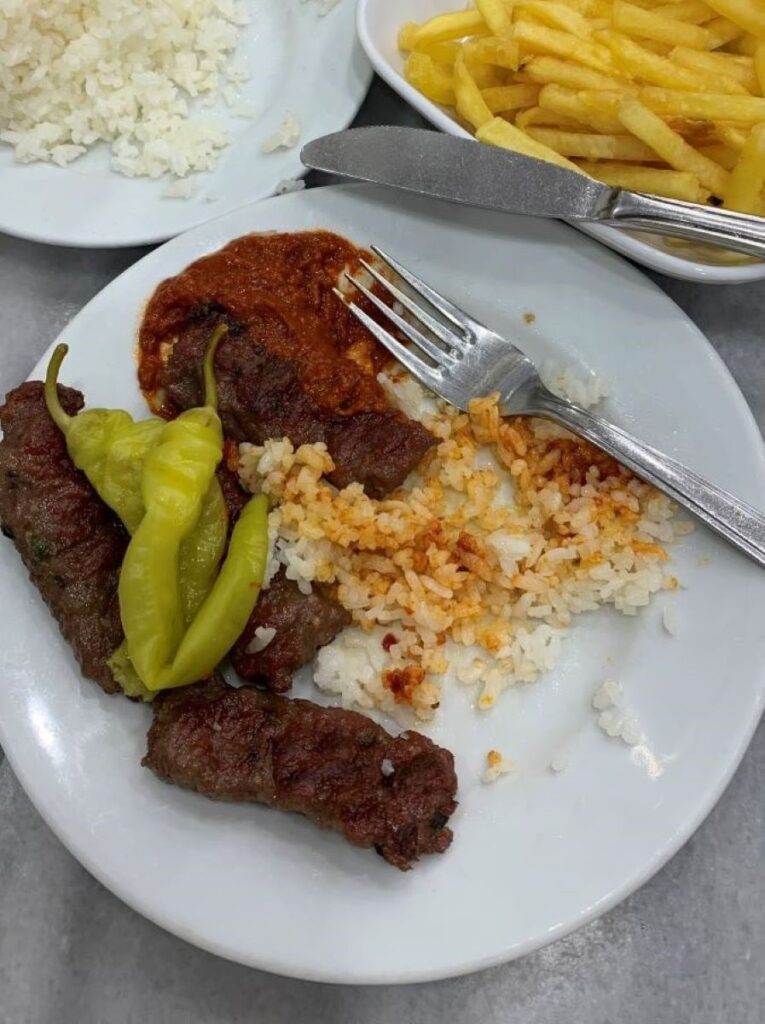


- Kebabs: Kebabs are a cornerstone of Turkish meals. From the tender, slow-roasted Adana kebab to the saucy Iskender kebab, each type offers a unique twist. Find more kebab inspirations here.
- Mezes: These bite-sized appetizers are perfect for sharing and come in both hot and cold varieties. Popular options include hummus, haydari (yogurt with herbs), and sigara böreği (crispy pastries stuffed with cheese).
- Pide: Often likened to a Turkish pizza, pide is a doughy, boat-shaped delight filled with meats, vegetables, and cheese.
- Baklava: No Turkish meal would be complete without indulging in baklava. This layered dessert of flaky phyllo, nuts, and syrup is a treat for anyone with a sweet tooth. Read more about this iconic dessert here.
Popular Turkish Beverages
Along with their delicious food, Turks are masters of beverages as well.
- Turkish Coffee: Brewed thick and strong, this coffee isn’t just a drink—it’s an experience. Served unfiltered in small cups, you’ll savor every sip.
- Tea (Çay): An everyday staple, Turkish tea is served hot and black, often in tulip-shaped glasses. It’s the glue of daily social gatherings.
- Ayran: A refreshing yogurt-based drink, ayran pairs deliciously with kebabs or spicy dishes, offering a cooling balance.
- Raki: Known as “lion’s milk,” this anise-flavored spirit is Turkey’s national drink. For newcomers, Raki is commonly sipped slowly alongside seafood-heavy meals. Discover more about Turkish beverages here.
Regional Food Specialties
Turkey’s diverse geography gives rise to equally diverse regional cuisines. Each region boasts flavors distinct to its ingredients and traditions.
- Gaziantep’s Culinary Heritage: Recognized by UNESCO as a City of Gastronomy, Gaziantep is famous for its sweet and savory fare. Don’t miss katmer, a pistachio-stuffed pastry, or the city’s finely crafted baklava.
- Black Sea-Style Hamsi: Anchovies, called hamsi, take center stage along the Black Sea coast. Whether fried, grilled, or baked with rice, this local specialty is packed with flavor. Learn more about Black Sea cuisine here.
By indulging in Turkey’s cuisine, you’re not just tasting food—you’re experiencing centuries of history, tradition, and artistry. What will your first bite in Turkey be?
When to Visit: Weather and Seasons in Turkey
Turkey offers something unique and beautiful in every season, but your experience will depend on the time of year you plan to travel. From the mild springs perfect for exploring ancient ruins to the sun-drenched summers along the coast, each season has its charm. So, when’s the best time to visit? Let’s break it down by seasons and activities.
Best Time for Sightseeing
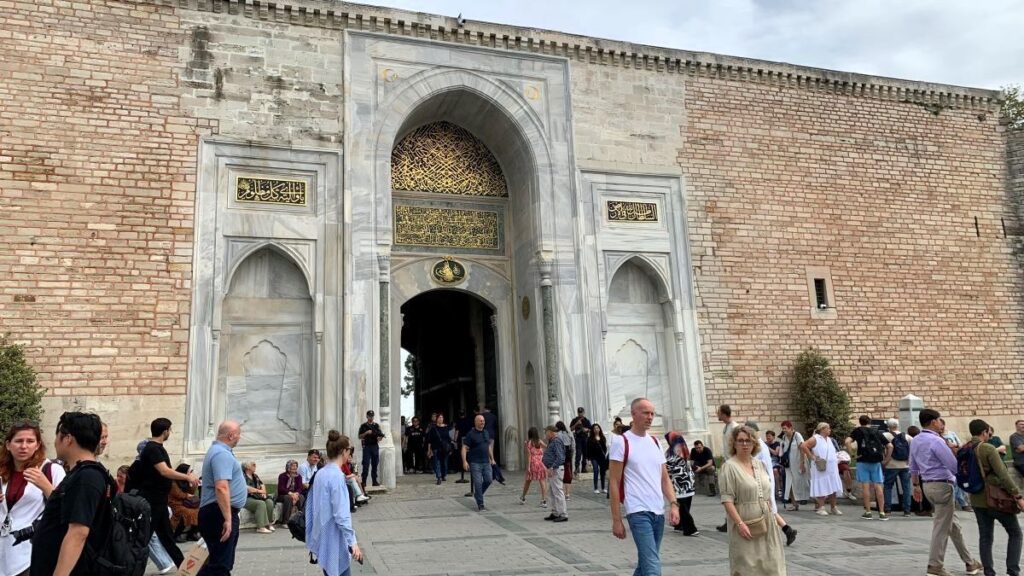
For travelers hoping to explore Turkey’s historical sites and bustling cities, spring (April-June) and autumn (September-November) are ideal. During these months, you can expect mild temperatures, blue skies, and fewer crowds compared to the summer rush.
- In spring, wildflowers bloom, adding extra beauty to open-air attractions like Ephesus or Pamukkale.
- Autumn brings golden hues and cooler days, making it perfect for walking tours in cities like Istanbul or Cappadocia.
Temperatures during these months typically hover between 68°F and 78°F (20°C–26°C), ensuring your sightseeing adventures are both comfortable and memorable. Planning your trip? Check the Best Time to Visit Turkey for more climate details.
Winter Adventures in Turkey
Winter (December-February) transforms parts of Turkey into a snowy paradise, offering activities that surprise many visitors. Ski enthusiasts should head to Uludağ, Turkey’s premier ski resort located near Bursa. It boasts picturesque slopes and modern facilities for skiing, snowboarding, and sledding.
Another magical winter destination is Cappadocia. Known for its fairy chimneys and hot air balloons, witnessing this breathtaking region blanketed in snow is an entirely different experience. Imagine exploring underground cities while snowflakes sift through the rugged landscapes above. For an unforgettable winter getaway, learn more about Turkey’s seasonal attractions, including Uludağ and Cappadocia, here.
Summer Hotspots
If beaches and warm weather top your travel list, summer (June-August) is the best time for you. While the inland regions can get quite hot, the coastal areas along the Turkish Riviera are the ultimate summer escape.
Popular destinations include:
- Antalya: Known as the “Pearl of the Mediterranean,” Antalya offers golden beaches, turquoise waters, and plenty of activities for families and solo travelers alike. You can enjoy everything from boat tours to exploring ancient ruins like Phaselis.
- Bodrum: Famous for its vibrant nightlife and chic resorts, Bodrum also boasts gorgeous beaches perfect for relaxing with a cocktail in hand.

The temperatures in these regions average 80°F to 95°F (27°C–35°C), so pack your sunscreen and prepare for water sports or sunbathing. Find more tips on Turkey’s summer destinations in this guide to Summer Beach Destinations.
No matter when you visit, Turkey’s diverse weather and landscapes will offer experiences that match your travel style. From wandering through cultural landmarks in mild seasons to soaking up the sun on stunning beaches or even enjoying a ski holiday, Turkey has it all.
Top Cities to Visit in Turkey and Key Attractions
It can be overwhelming to pick which cities to visit in a country that spans two continents, carries centuries of history, and offers a blend of captivating natural and manmade wonders.
For this Turkey Travel Guide, I’ve put together a breakdown of some of Turkey’s top cities and why they deserve a spot on your travel itinerary.
Istanbul: Meeting Point of Continents
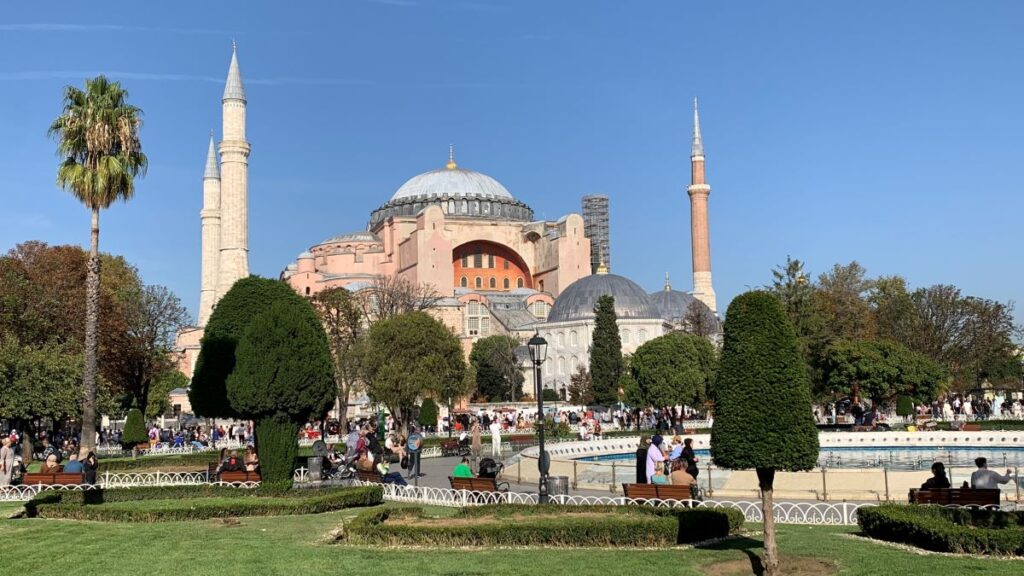
Istanbul, Turkey’s largest and most vibrant city, is a treasure trove of history, culture, and breathtaking architecture. Known as the city that bridges Europe and Asia, Istanbul dazzles with world-famous landmarks that echo its Byzantine and Ottoman past.
- Hagia Sophia: Originally built as a Christian church, later converted into a mosque, and now a museum, Hagia Sophia’s majestic domes and mosaics are a marvel to behold. It’s a must-visit to truly grasp Istanbul’s layered history.
- Topkapi Palace: Once the center of the Ottoman Empire, this sprawling palace offers a glimpse into royal life with its lavish courtyards, stunning artifacts, and breathtaking views of the Bosphorus.
- Grand Bazaar: A shopper’s paradise and one of the world’s oldest covered markets, the Grand Bazaar is where you can find everything from handcrafted ceramics to Turkish rugs.
For a 4-day Istanbul itinerary check out my post: How to Explore Istanbul in 4 Days: A Complete Itinerary for First-Time Visitors
Cappadocia: A Dreamlike Landscape

Cappadocia is like stepping into another world, known for its surreal, almost lunar terrain. Its famed fairy chimneys and unique rock formations make it a hotspot for photographers and adventurers alike.
- Hot-Air Balloon Rides: If there’s one must-do activity here, it’s a sunrise hot-air balloon ride. Floating over fairy chimneys and valleys is an unforgettable experience that feels almost magical.
- Fairy Chimneys: These tall, cone-shaped rock formations are natural wonders that have become symbols of the region. Exploring the valleys, such as Pasabag (Monk Valley) and Goreme, reveals an astonishing landscape.
- Cave Hotels: Make your stay extraordinary by booking a cave hotel. These accommodations carved into rock bring ancient living to life with modern touches of luxury.
Cappadocia’s otherworldly charm can’t be overstated. Read more about it here.
Ephesus: A Walk Through Ancient History
For history lovers, Ephesus is a journey back in time to one of the best-preserved ancient cities in the world.

- Library of Celsus: This iconic structure is a marvel of ancient Roman architecture. It’s Instagram-worthy, sure, but it’s also a fascinating historical site with inscriptions and deeper stories.
- Terrace Houses: These luxurious Roman homes give an intimate look at how the elite lived, complete with intricate frescoes and mosaics.
- Temple of Artemis: Once one of the Seven Wonders of the Ancient World, only a few remnants of this massive temple remain. Even so, its significance in ancient history is profound.
Dive into Turkey’s ancient history by planning a visit to Ephesus and learn more here.
Pamukkale: The Cotton Castle

Pamukkale, meaning “Cotton Castle” in Turkish, is unlike anything you’ve seen before. This natural wonder combines stunning white travertine terraces with warm, mineral-rich waters, making it a favorite for travelers seeking relaxation and unique sights.
- Travertines: These cascading terraces are naturally formed by calcium deposits from the thermal waters. Walking barefoot across these terraces is a surreal experience you won’t want to miss.
- Ancient City of Hierapolis: Nestled next to the travertines, this Greek-Roman spa city adds a layer of historical intrigue. The ancient theater and well-preserved ruins are perfect for a day of sightseeing.
Pamukkale is as rejuvenating as it is beautiful. Discover more about this site here.
Antalya: Gateway to the Turquoise Coast
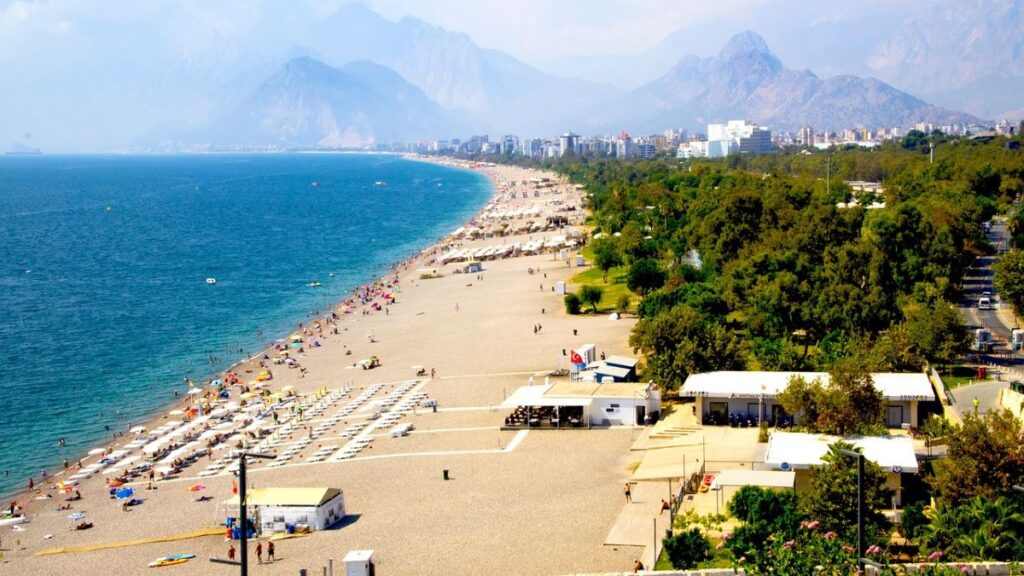
Antalya, located on Turkey’s southern Mediterranean coast, is a blend of natural beauty, culture, and ancient history. Often referred to as the gateway to the “Turkish Riviera,” it’s a paradise for anyone seeking sunny beaches and relaxing vibes.
- Old Harbor: This charming area is perfect for a leisurely stroll. It’s full of quaint shops, seafood restaurants, and historic charm.
- Nearby Ancient Ruins: Sites like Aspendos and Perge are just a short drive away, offering a peek into ancient civilizations with stunning amphitheaters and temples.
- Pristine Beaches: From the family-friendly Konyaaltı Beach to the more secluded Lara Beach, Antalya’s coastline is perfect for a mix of sunbathing and watersports.
Learn why Antalya belongs on your Turkish travel itinerary here.
Turkey’s diversity in cities and attractions means there’s something for everyone, no matter your interests. This guide helps you narrow down choices so you can enjoy the best this incredible country has to offer!
Essential Travel Information for Turkey
Planning a trip to Turkey is exciting, but knowing a few essential things before you go can make your experience much smoother. From managing currency to transportation, entry requirements, and safety tips, here’s what you need to know.
Navigating Currency and Costs
Turkey’s official currency is the Turkish Lira (TRY), and it’s widely accepted throughout the country. While major cities and tourist hotspots may accept euros or dollars, it’s best to have lira on hand for smaller towns or local markets.
ATMs are plentiful in urban areas, allowing you to withdraw lira conveniently. Credit cards are widely accepted for shopping, dining, and even transportation, but carrying some cash is advisable for street vendors or local bazaars.
To get the best value for your money:
- Exchange currency wisely: Avoid exchanging cash at airports as their rates are often less favorable. Look for exchange offices in city centers for competitive rates.
- Use budgeting tools: On average, travelers can expect to spend around $40–$50 per person daily, covering food, transport, and sightseeing. Learn more about travel costs in Turkey.
- Plan for inevitable fees: Small towns might not accept cashless payments everywhere, so having small bills can save you a headache.
Getting a SIM Card in Turkey
If you’re planning to spend more than a few days in Turkey, getting a local SIM card is a smart move. It’s affordable, easy, and helps you avoid high roaming charges. Here’s what you need to know:
Major Providers
Turkey has three main mobile network providers:
- Turkcell (best coverage, especially in rural areas)
- Vodafone Turkey
- Türk Telekom
All three offer tourist SIM card packages with data, local calls, and sometimes international minutes.
Where to Buy
- Airport Kiosks: Super convenient but often more expensive.
- Official Stores: Look for the provider’s branded shops in city centers, malls, or near major tourist spots.
- Mobile Shops & Markets: Smaller vendors may also sell SIM cards, but always make sure they register your passport correctly.
You’ll need to bring your passport to register the SIM—it’s a legal requirement for visitors.
Cost
Tourist SIM card packages usually include a set amount of data (20–50 GB), local minutes, and some international calls. Prices (as of early 2025) are:
- Turkcell: Around 600–800 TRY (about 20–25 USD) for a tourist package
- Vodafone Turkey: Around 550–750 TRY
- Türk Telekom: Similar price range, sometimes offers extra data bonuses
These packages are typically valid for 30 days and can be topped up if needed.
Network Quality
- Turkcell has the best overall coverage and fastest data speeds, especially outside big cities.
- Vodafone and Türk Telekom are reliable in cities and tourist areas but may be a bit patchy in remote spots.
Transportation Tips
Getting around Turkey is seamless thanks to a variety of transportation options that cater to different budgets and comfort levels.
- Domestic Flights:
- Turkey’s vast geography is well-served by domestic airlines like Turkish Airlines, Pegasus, and AnadoluJet. Flights between cities like Istanbul and Antalya are frequent, offering a quick and efficient way to travel long distances.
- Intercity Buses:
- For a more economical option, consider intercity buses. Companies such as Kamil Koç and Metro Turizm operate routes connecting major destinations. Modern buses feature amenities like wi-fi and snacks, ensuring a comfortable ride.
- Local minibuses, known as dolmuş, offer affordable transportation within cities or shorter intercity routes. These can be a bit crowded but are an authentic way to travel like a local.
- Car Rentals:
- Renting a car is ideal if you’re planning to explore Turkey’s off-the-beaten-path gems, such as the Aegean coastline or Cappadocia’s quiet valleys. Be prepared for toll roads and local driving customs.
To review these transportation options in more detail, check Travel & Transport in Turkey.
Visa and Entry Requirements
Turkey’s visa process is straightforward, but it’s essential to check whether you need one before traveling.
Many travelers, including Canadian citizens, U.S. citizens, and UK citizens, do not require a visa to enter Turkey. They can visit visa-free for up to 90 days within a 180-day period. They will need a passport that is valid for at least six months beyond their entry date.
Safety and Local Guidelines
Turkey is generally a safe destination for travelers, but like anywhere else, a few precautions can help you avoid potential issues.
- Stay aware of your surroundings: While tourist areas like Istanbul and Cappadocia are secure, it’s wise to avoid isolated spots or poorly lit streets at night.
- Avoid political demonstrations: These can occur in major cities, and it’s best to steer clear to ensure your safety.
- Cultural considerations: Turkey is a Muslim-majority country, so respecting dress codes, especially in mosques, is crucial. Women should carry a scarf for visiting religious sites.
- Local laws: Drug use, including marijuana, is strictly prohibited and can lead to severe penalties. While alcohol is available in most parts of Turkey, public drunkenness is frowned upon.
For up-to-date travel advisories, check the Turkey Travel Advisory.
By keeping these essentials in mind, you’ll be prepared for a hassle-free and enriching adventure in Turkey.
Conclusion
Hopefully, this Turkey travel guide has given you enough reason to plan your trip.
Turkey is a perfect destination for any first-time traveler. Whether you’re exploring the bustling streets of Istanbul, floating above fairy chimneys in Cappadocia, or relaxing on the turquoise coastlines, the experiences here are nothing short of extraordinary.
Now’s the time to take action—start planning your adventure, booking flights, and putting together your itinerary.
Your Turkish journey awaits.
Related Posts:
New Posts:
-
Lake Bled Day Trip: The Perfect First-Time Adventure from Ljubljana
Welcome! If you’re spending time in Ljubljana and want to experience Slovenia’s most magical landscapes, a Lake Bled day trip from Ljubljana is an easy choice. With its glacial blue water, Lake Bled Island at its center, and Bled Castle perched high on the cliffs, this spot looks straight out of a fairytale—no need for…
-
Best Things to Do in Ljubljana, Slovenia (First-Time Visitor’s Guide)
Welcome! Thank you for visiting my blog about the best things to do in Ljubljana! In this guide I’ll share my own favorite spots and handy tips, best places to eat and some local insights you might not find elsewhere. Ljubljana, the charming capital of Slovenia, is stunning! The architecture is breathtaking! I promise you,…
-
Best Tango Shows in Buenos Aires: My Guide for First-Time Visitors
Buenos Aires is the birthplace of tango – raw, passionate, and unforgettable! But if it’s your first time in the city, choosing the right tango show can feel overwhelming. Do you go for the glamorous, cabaret-style performance with a gourmet dinner? Or do you slip into a smaller, historic venue where tango feels more like…
-
Recoleta Cemetery in Buenos Aires: History, Highlights, and Visitor Tips for 2025
Welcome to Recoleta Cemetery! “If you’re visiting Buenos Aires, this is a place you should see at least once. You’ll leave with photos, stories, and a deeper understanding of Argentina’s history.” Related Posts: Introduction: Why Visit Recoleta Cemetery? Recoleta Cemetery in Buenos Aires is not your typical graveyard.It’s more like an open-air museum filled with…
-
Tokyo vs Osaka: Your Guide To Understanding The Difference Between The Two Most Popular Cities in Japan [2025]
So the question is, Tokyo or Osaka which is better? Do you want to pick between the two? It can feel like it’s hard to decide, especially if it’s your first trip to Japan. We’ve been to both. We loved them both. We spent more days in Osaka than we did in Tokyo, and did…
-
The Ultimate 5-Day Itinerary in Tokyo: A Fun and Easy Guide for First-Time Visitors
5 Day Itinerary in Tokyo – A City of Contrasts and Wonders I’ve created this 5 day itinerary in Tokyo to help you get the most out of your time here. It’s based on my own experience in this incredible city. Tokyo is one of the most exciting cities in the world. It’s a place…

